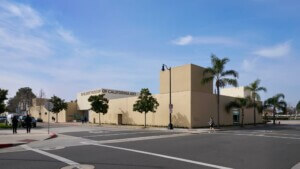Los Angeles’s San Fernando Valley Reseda neighborhood is poised to spend $23 million in reactivated excess bonds as a result of post-redevelopment bills signed late last year by Governor Jerry Brown.
The action came last September after a series of legislative moves that in 2011 began to wind down and ultimately dissolve all 400 of California’s local city and County Redevelopment Agencies (CRAs)—entities originally conceived to funnel tax increments into blighted areas to promote economic development and affordable housing projects. Leading up to the dissolution, much criticism had been directed to community redevelopment agencies, citing waste and corruption.
“The only way to mend it was to end it and cut out abuses,” said L.A. city councilmember Bob Blumenfield, who was serving in the California State Assembly at the time of the 2011 CRA dissolution and now represents the Third District, which spans the northwest portion of Los Angeles in the San Fernando Valley, including the communities of Canoga Park, Reseda, Tarzana, Winnetka, and Woodland Hills. His district contains three of the nine CRA-owned properties that must be developed within a certain frame of time, as set forth in the governor’s bills. “If we don’t put together an acceptable development deal within three years, the nine properties get sold off. Having said that, we have the potential with these three lots in our district to generate catalytic investment that we think will create a domino effect of more development.”
Reseda’s plans for the reinvestment of funds in Los Angeles consist of two key vision plans related geographically and culturally along the historic portion of Sherman Way. The Reseda Theater Adaptive Reuse Project (for which the RFP phase is underway) hopes to spur commercial oriented development, including entertainment, dining, and other services, to activate the street and generate more foot traffic. The “Reseda Rising” project is a larger revitalization project for Sherman Way’s historic commercial corridor and would include two non-contiguous CRA properties as lynchpins in the effort.
For other parts of Los Angeles, the city was able to transfer a pipeline of affordable housing projects, as well as some unspent affordable housing and general redevelopment purpose bonds. Once those projects are completed, however, there will be no more traditional tax increment funds to devote to redevelopment. Los Angeles is currently gearing up to establish a new type of agency that will take the place of the former redevelopment agencies. This model, provisionally referred to as Community Revitalization and Investment Authorities (CRIAs), would provide a minimum 25 percent work programs for affordable housing, with the intention to
put a focus on challenged neighborhoods. Unlike the former CRAs, CRIAs would be run by separate boards composed of elected officials and at least two public members.
But the new agencies would be working with nearly 70 percent fewer funds under the CRIA model in accordance with restrictions governor Brown has set out in AB107 and other respective bills. When asked, Mayor Eric Garcetti’s office couldn’t give benchmark dates or a timeline for this kind of reorganization, but re-emphasized the mayor’s strong desire to get 100,000 new housing units built in the city by 2021 (Under the mayor’s plan, outlined in 2014, 30,000 new building permits for housing have already been issued as of September 2015.)
Meanwhile, San Francisco will use its reinstated funds to finance a few key housing projects, but the city also negotiated to spend a portion of reactivated funds to implement the Transbay Redevelopment—a large-scale neighborhood and transportation redevelopment atop derelict and demolished highway ramps that were damaged in the 1989 Loma Prieta earthquake. Currently used for parking, the mixed-use, transit-oriented neighborhood will comprise approximately seven million square feet of residential, office, retail, hotel, and park spaces, but 1,200 new units reserved for very low, low, and moderate income households (befitting SB 107 requirements). The project between the South of Market Street area and Rincon Hill on San Francisco’s east side also features a 1,100-foot tall-skyscraper by Pelli Clarke Pelli—the Salesforce Tower. San Francisco was able to continue with the Transbay Redevelopment in part because it is a continuation of funds originally allocated through a CRA, and also because of sheer political will and a big lobbying effort.
Other cities continue to fight for what they view are their legal rights to the property taxes and accrued interest that made up their local CRA funds. Watsonville and Glendale’s lawsuits against the California Department of Finance were settled in the municipalities’ favor, but hundreds of others remain unresolved.
Back in Reseda, councilmember Blumenfield is looking ahead to the economic development opportunities in his district, despite the looming questions about what kind of new agency might accommodate such projects in the future. “If we don’t spend the excess bond money from a development perspective, it’s just gone,” he said. “In my district we need market rate housing and affordable housing. We might be able to use some of the bond money to build affordable housing. Instead of traditional redevelopment funding, there are other options, such as borrowing on future tax revenue or subverting funds back into a project—these are just another shade of the same color.”










